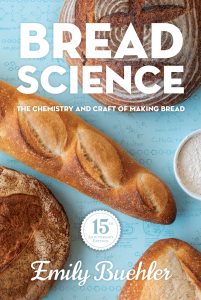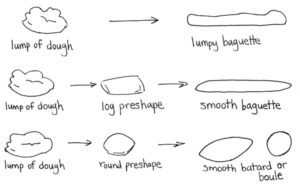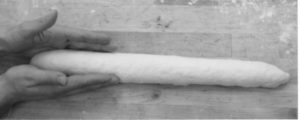Bread Science
Novice or experienced, home-baker or professional, Bread Science: the Chemistry and Craft of Making Bread has something for everyone. Beginners will find step-by-step instructions on the process of making bread, using a simple recipe and common kitchen tools. They’ll learn to avoid pitfalls. Baking experts will find the detailed chemistry behind each loaf and how that chemistry affects results. Bread Science brings together a wealth of information in an easy-to-read format.
Bread Science focuses on the process of how to make bread instead of on individual recipes. Each chapter details a different step of the process with practical instructions, helpful tips, and potential pitfalls described. In addition, the biology, chemistry, and physics of dough are presented in a thorough yet accessible manner. Understanding the food science behind the dough’s behavior gives the baker a more complete grasp of the process. Each chapter is divided into short sections, making Bread Science useful as a reference. Over 250 photos and diagrams accompany the text. The bread science sections are fully referenced, enabling the reader to find more detailed information on subjects of particular interest. An annotated bibliography, glossary, and index are included.
Chapter 1 discusses some basic aspects of artisan bread making, such as the main ingredients and the basic structure of recipes. Chapter 2 is the science chapter and includes sections on yeast, fermentation, flavor, flour gluten, gas retention, proteases, salt, and more. The sections include not only the current understanding of the subject but also the history of research leading to the present. It is hoped that readers will see scientific research as a series of understandable steps and not as a “black box” of complicated procedures from which answers appear.
Chapter 3 explores preferments, both yeast preferments and sourdough starter. Preferments are a lesser-known, optional first step in bread making, but using preferments is an easy way to improve dough flavor and handling. Chapter 4 describes mixing the dough, reviewing the chemical reactions that occur and relating them to the baker’s actions. Procedures are given for both kneading the dough and what to do with it after, which can be an awkward time for new bakers. There is an emphasis on making-do with common kitchen tools instead of buying expensive bread making tools. Chapter 5 covers the fermentation step. Watching dough rise is not as boring as one might think! Even during this waiting period, steps can be taken to improve the final product.
Chapter 6 is the dough shaping chapter. While practice is needed for the baker to become comfortable with shaping batards and baguettes, an overall understanding of why dough is shaped and what to watch for will make practice more fruitful. Techniques are described with accompanying pictures, along with pictures of what not to do. Chapter 7 describes the final steps of bread making, proofing and baking. This is perhaps the baker’s greatest chance to create an aesthetically pleasing loaf of bread by proofing the dough properly, having the proper oven temperature, and using scoring and steam. Enhancing home ovens is also discussed. Chapter 8 contains odds and ends, including a trouble-shooting guide and recipes for basic white French bread, Italian ciabatta, whole wheat bread, and sourdough bread.
A number of excellent bread books have been published in recent years that offer bits and pieces of the science that underlies the craft, but none that focus specifically on that science. Emily Buehler has brought bread science and technique together for us in an easy to comprehend manual, based on her work and study at one of America’s finest artisan bakeries. This book will be an important addition to every bread lover’s library, whether professional or serious home baker.
—Peter Reinhart, author of The Bread Baker’s Apprentice
Read comments from readers here.
Learn what’s new in the 15th anniversary edition here.
View errata (for the first edition) here.
Note: Shipping will be added at checkout. For orders of 6+ books, the shipping will be inaccurate; contact us for an accurate cost, or we will contact you with the correct amount. Read the details here. Non-US shipping is available—please read the details page for possible cheaper options!




